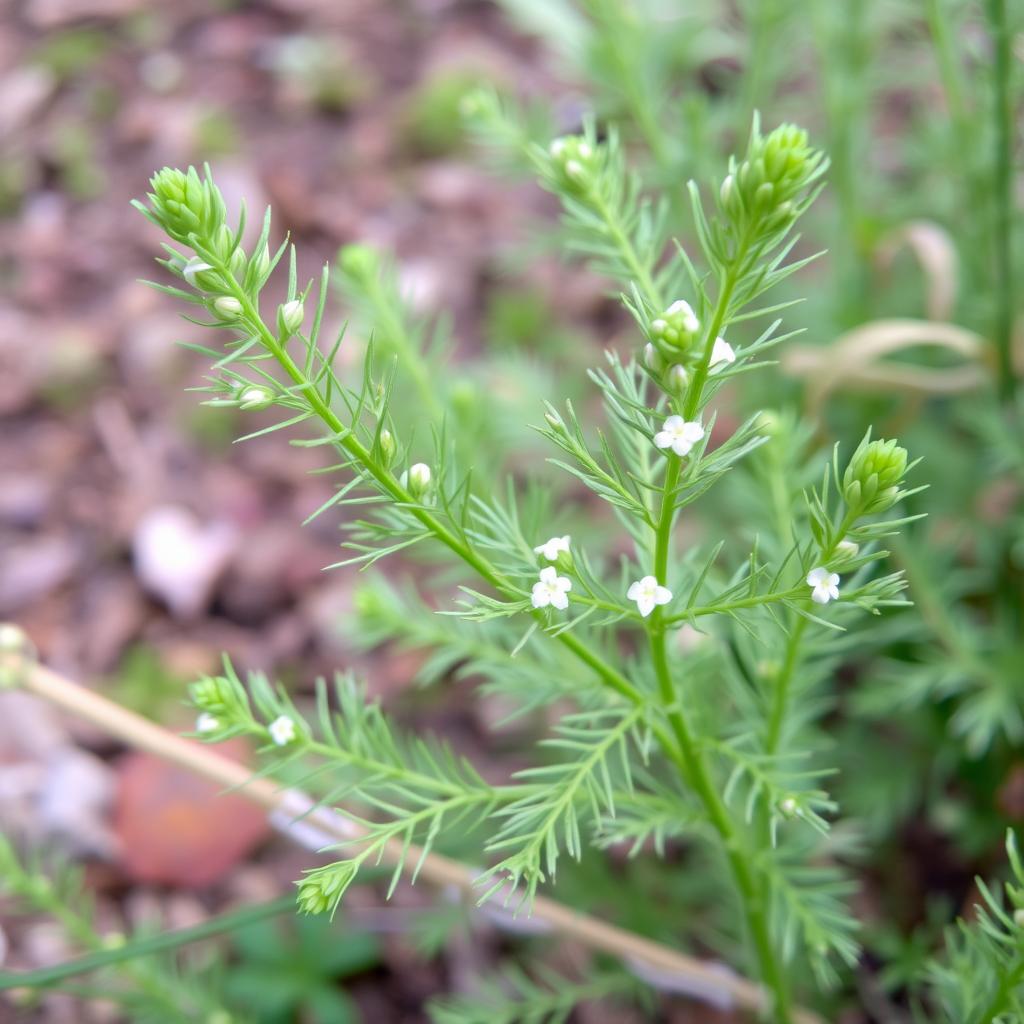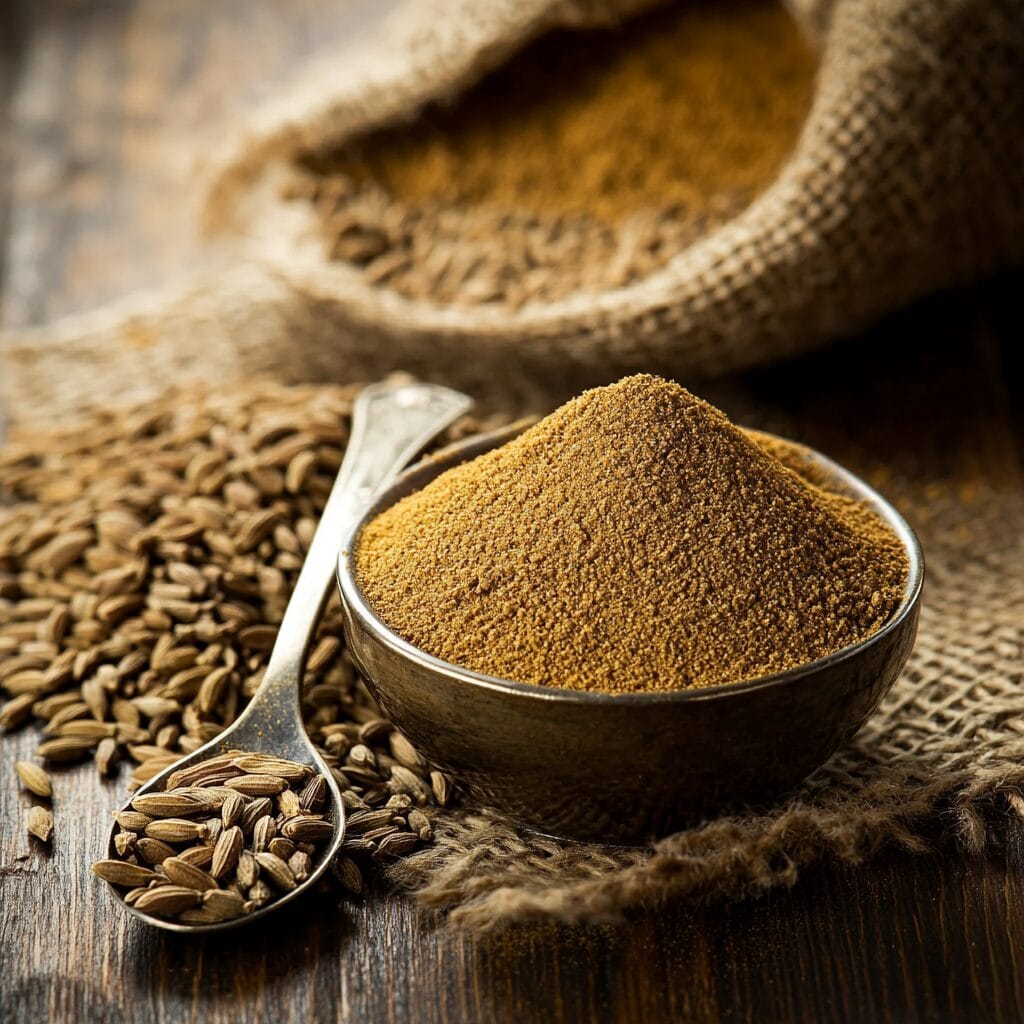I love exploring the world of spices, and caraway seeds really stand out. These small, crescent-shaped seeds may look simple, but they add a lot to our food. They can make our meals taste better and be healthier.
In this guide, we’ll look at caraway seeds’ history, where they come from, and how to use them in cooking. Whether you’re an experienced cook or just starting out, you’ll learn how caraway seeds can improve your dishes and health.

Key Takeaways
- Caraway seeds are a versatile spice with a distinctive, earthy flavor that can enhance a wide range of dishes.
- These seeds are rich in essential nutrients, including fiber, minerals, and antioxidants, making them a valuable addition to a healthy diet.
- Have a long history of use in various culinary traditions, from traditional European dishes to modern cooking applications.
- Proper storage and preparation techniques can help you maximize the flavor and aroma of caraway seeds in your cooking.
- Exploring the diverse uses and health benefits of caraway seeds can open up a world of culinary possibilities and support your overall well-being.
What Are Caraway Seeds and Their Origins
Caraway seeds are the dried fruit of the caraway plant, Carum carvi, native to Europe and parts of Asia. Their flavor combines warm, earthy, and slightly anise-like notes, making them a unique addition to both sweet and savory dishes. Learn how caraway compares to other spices like cumin in this guide to spice profiles.
Historical Background and Cultural Significance
Caraway seeds have been used for centuries in cooking worldwide. They come from the Mediterranean and Central Asia, where they were valued for their health and taste benefits. In Europe and the Middle East, caraway is a key ingredient in breads, stews, and more.
Botanical Classification and Plant Description
Caraway belongs to the Apiaceae family, which includes herbs like dill and parsley. It’s a biennial herb that can grow up to 60 cm tall. It has feathery leaves and white or pink flowers in the second year. The seeds are the most prized part, harvested from the small fruits after the flowers fade.
Growing Regions and Cultivation Methods
- Caraway grows best in temperate climates, mainly in Eastern and Central Europe, and parts of Asia.
- It needs well-drained, rich soil and full sun. Proper planting, weeding, and watering are key for caraway cultivation.
- Harvesting happens in late summer or early fall, when the seeds are fully ripe and have a strong caraway aroma.

Knowing about caraway seeds’ origins, history, and how they grow helps us appreciate this spice. It has been loved by cooks for many years.
Essential Nutrients and Nutritional Profile
Caraway seeds are full of important nutrients, offering many health benefits. These small, crescent-shaped seeds are rich in vitamins, minerals, and other good stuff. They can help improve your overall health.
One key caraway health benefit is their vitamin and mineral content. They are a great source of vitamins A, C, and E. These vitamins help your immune system, skin, and protect against damage.
Caraway seeds also have a lot of dietary fiber. This helps with digestion and keeps your gut healthy. They also have essential minerals like iron, calcium, magnesium, and potassium. These minerals are important for strong bones, blood pressure, and muscle and nerve health.
| Nutrient | Amount per 100g |
|---|---|
| Calories | 379 kcal |
| Protein | 18g |
| Fat | 18g |
| Carbohydrates | 44g |
| Fiber | 38g |
| Vitamin A | 64 IU |
| Vitamin C | 5mg |
| Calcium | 707mg |
| Iron | 8mg |
With their rich nutrient profile, it’s clear why caraway health benefits are well-known. Adding these tasty seeds to your meals can increase your intake of vital vitamins, minerals, and other nutrients.

The Distinctive Flavor and Aroma
Caraway seeds have a unique flavor that stands out. This taste comes from the chemicals in the seeds. Carvone, a terpene, is the main reason for the caraway taste. It gives a warm, earthy, and slightly minty flavor.
Chemical Compounds Responsible for Taste
Caraway seeds also have limonene and linalool. These compounds add to the caraway flavor. Together, they create a taste that reminds you of anise, cumin, and fennel.
Comparison with Similar Spices
- Caraway and cumin are similar but not the same. Cumin tastes earthy and smoky, while caraway is more delicate with a licorice-like taste.
- Caraway and fennel both have a licorice-like aroma. But fennel tastes sweeter and more pronounced, while caraway is more subtle.
Culinary Flavor Profile
In cooking, caraway seeds are valued for their unique flavor. They pair well with hearty foods like breads, stews, and roasted meats. They also add depth to sauces, dressings, and vegetable dishes.
“Caraway seeds have a distinct flavor that is often described as a blend of licorice, nutmeg, and citrus. This unique taste makes them a valuable addition to many European and Middle Eastern cuisines.”
Health Benefits and Medicinal Properties
Caraway seeds are more than just a tasty addition to your food. They are packed with health benefits. Discover the amazing caraway health benefits that make them essential in your kitchen.
Caraway seeds are great for your digestive health. They contain compounds that can ease bloating, gas, and indigestion. They also have anti-inflammatory properties, which can help with conditions like IBS or chronic inflammation.
- Supports Digestive Health: Caraway seeds contain compounds that can help alleviate digestive issues like bloating, gas, and indigestion.
- Anti-Inflammatory Properties: Caraway seeds may possess anti-inflammatory effects, potentially aiding in the management of conditions like IBS and chronic inflammation.
- Potential Blood Sugar and Cholesterol Benefits: Preliminary studies suggest that caraway seeds may have a positive impact on blood sugar levels and cholesterol profiles, though more research is needed.
Some studies also show that caraway seeds may help with blood sugar and cholesterol. But, we need more research to fully understand these benefits.
| Nutrient | Amount per 1 tablespoon (6 g) | % Daily Value |
|---|---|---|
| Calories | 22 | – |
| Total Fat | 1.5 g | 2% |
| Carbohydrates | 3 g | 1% |
| Fiber | 2 g | 7% |
| Protein | 1 g | 2% |
Adding caraway health benefits to your diet is easy and tasty. You can sprinkle them on your favorite dishes or make a soothing tea. These versatile seeds offer many health benefits.
Traditional Uses in European Cuisine
Have been a key part of European cooking for centuries. They add a unique flavor to many dishes across the continent. From Germany’s hearty stews to Nordic breads and Eastern European delicacies, caraway is a favorite ingredient.
German and Austrian Dishes
In Germany and Austria, caraway seeds are a must-have in many recipes. They’re often used in sauerkraut, a fermented cabbage dish loved by many. Caraway also makes rye breads, like pumpernickel, a staple in these cuisines.
Nordic Cooking Applications
In the Nordic countries, caraway seeds are prized for enhancing flavors in baked goods and dairy. They’re found in rye bread and crackers, and in cheese and butter recipes. They add a warm, earthy taste to these foods.
Eastern European Recipes
- In Poland, caraway seeds are a key ingredient in pierogi dumplings, adding depth to the filling and complementing the dough.
- In Russia, caraway is used to season borscht, the iconic beet-based soup, as well as in rye bread and sausages.
- Hungarian cuisine features caraway seeds in goulash, a hearty stew that showcases the spice’s ability to balance rich, savory flavors.
| Dish | Caraway Culinary Uses | Country |
|---|---|---|
| Sauerkraut | Seasoning | Germany, Austria |
| Rye Bread | Flavoring | Germany, Austria, Nordic Countries |
| Pierogi | Filling Ingredient | Poland |
| Borscht | Seasoning | Russia |
| Goulash | Seasoning | Hungary |
These examples show how caraway seeds are used in traditional European cooking. They highlight the spice’s versatility and lasting appeal in many recipes.
Modern Culinary Applications for Caraway Seeds
Caraway seeds are more than just a part of old European dishes. Today, chefs and home cooks are finding new ways to use them. They add flavor to many modern dishes.
Their unique taste is why they’re loved in modern cooking. Caraway seeds have an earthy, sweet, and slightly anise-like flavor. What does caraway seeds taste like? This flavor works well with both savory and sweet dishes, making them a key ingredient.
Caraway culinary uses have grown beyond traditional dishes. Now, they’re in roasted veggies, meats, baked goods, dairy, and even cocktails. They fit well in many cuisines, from Middle Eastern to Scandinavian.
- Caraway-Crusted Roasted Salmon: The nutty, earthy flavor of caraway seeds pairs beautifully with the richness of salmon, creating a delightful contrast of tastes and textures.
- Caraway-Infused Cheese: Sprinkle caraway seeds into your favorite cheese spread or use them to create a unique, fragrant cheese that elevates any cheese board.
- Caraway-Scented Cocktails: Add a touch of caraway essence to your favorite gin or vodka-based cocktails, adding depth and intrigue to your drinks.
As chefs and home cooks keep exploring caraway seeds, we’ll see more creative uses. They’re perfect for adding a unique twist to dishes or creating bold flavors. Caraway seeds are essential in today’s kitchen.
Storage and Preservation Methods
Keeping your caraway spice fresh is key. Here’s how to do it right:
Proper Storage Conditions
- Use an airtight container like a glass jar or a resealable plastic bag for caraway seeds.
- Place the container in a cool, dark spot. Stay away from sunlight and heat.
- Don’t store caraway seeds in the fridge or freezer. It can cause moisture buildup.
Shelf Life Guidelines
Caraway spice stays fresh for a good while if stored right:
- Whole caraway seeds last 6 to 12 months.
- Ground caraway powder keeps for 3 to 6 months.
Signs of Spoilage
Check for these signs to know if your caraway spice is still good:
- Look for a change in smell or taste.
- Watch out for mold or color changes.
- Check for clumping or hardening of the seeds.
If you see any of these, it’s time to get a new batch. This keeps your cooking at its best.
| Storage Condition | Shelf Life (Whole Seeds) | Shelf Life (Ground Powder) |
|---|---|---|
| Airtight Container, Cool and Dark | 6-12 months | 3-6 months |
| Refrigerator or Freezer | Not Recommended | Not Recommended |
By sticking to these tips, your caraway spice will stay fresh. It will make your dishes even better.
Caraway Essential Oil and Its Uses
Caraway essential oil comes from the seeds of the Carum carvi plant. It’s known for its strong scent and many uses. This oil is great for cooking and personal care.
Extraction and Composition
To get caraway essential oil, steam distillation is used. This method pulls out the plant’s natural scents. The oil is clear to pale yellow and smells like licorice, thanks to carvone.
Aromatherapy and Wellness
- Caraway essential oil’s calming scent helps with relaxation and stress relief in aromatherapy.
- It might help with pain because of its anti-inflammatory and analgesic properties.
- It could also ease digestive problems like bloating and gas when inhaled.
Skincare and Personal Care
In the personal care world, caraway essential oil is becoming popular. It might help with acne and soothe the skin. It could also protect the skin from damage.
| Potential Skincare Benefits | Applications |
|---|---|
| Acne reduction | Facial cleansers, toners, and spot treatments |
| Soothing and anti-inflammatory effects | Moisturizers, serums, and balms |
| Promoting skin rejuvenation | Anti-aging creams and serums |
Always use caraway essential oil safely. Talk to a healthcare expert before adding it to your skincare or wellness routine.
How to Toast
Caraway seeds add a unique caraway flavor and caraway aroma to many dishes. To get the most out of them, it’s key to know how to toast and prepare them right.
Toasting Techniques
Toasting caraway seeds can really boost their taste. Here’s how to toast them perfectly:
- Begin with a clean, dry skillet or saucepan over medium heat.
- Put the caraway seeds in and toast, stirring often, for 2-3 minutes. They should smell great and look a bit darker.
- Watch them closely while toasting. Caraway seeds can burn quickly if you’re not careful.
- When they’re toasted just right, take them off the heat. Let them cool down completely before using or grinding.
Grinding Methods
Grinding toasted caraway seeds can make their caraway flavor and caraway aroma even stronger. Here are some ways to grind them:
- Spice grinder or coffee grinder: This is the fastest way to make a fine powder from the seeds.
- Mortar and pestle: Grinding by hand lets you control the texture. It’s good for a coarser grind.
- High-powered blender or food processor: If you don’t have a spice grinder, these can work too. But the texture might not be as fine.
Whichever method you choose, keep the ground caraway seeds in an airtight container. This keeps their caraway flavor and caraway aroma fresh. Using freshly toasted and ground caraway seeds will make your dishes taste the best.
Substitutes and Alternatives
Having a wide range of spices and seasonings is key in cooking. Caraway seeds have a unique taste, but sometimes you might need a different option. You might wonder, “is caraway the same as cumin?” or “are fennel and caraway the same?“. The answer is no; each spice has its own special taste.
Looking for a caraway substitute? Here are some options:
- Cumin – Cumin has a similar earthy, nutty taste to caraway. But, it’s stronger, so use it sparingly.
- Fennel seeds – Fennel seeds have an anise-like flavor. They’re great in baked goods, sauces, and veggies.
- Anise seeds – Anise seeds also have a licorice taste. They’re good in breads, desserts, and some savory dishes.
When using substitutes, start with a little and adjust as needed. The taste can vary, so you might need to try a few times to get it right. Enjoy exploring the world of spices and finding new flavors!
Conclusion
We’ve looked into the world of caraway seeds in this article. We talked about where they come from, their nutritional value, and their unique taste. They are a key spice in European cooking and are now used in many ways.
Can make your baked goods taste better, add flavor to sauerkraut, and even help your health. They mix savory, sweet, and earthy flavors well. This makes them great for many dishes, from stews to pastries.
Keep exploring with caraway in your cooking. Try toasting, grinding, and adding them to your favorite dishes. See how they can make your food taste better and maybe even help your health. Caraway are a great way to add flavor and nutrition to your meals.
FAQ
What are caraway seeds?
Come from the caraway plant, part of the parsley family. They have a unique taste, often described as a mix of cumin and licorice.
What are the health benefits ?
Caraway seeds are packed with nutrients like fiber, vitamins, and minerals. They might help reduce inflammation, improve digestion, and even manage blood sugar and cholesterol.
How do caraway seeds differ from cumin and fennel?
Caraway, cumin, and fennel belong to the same family but taste different. Caraway have an earthy, sweet flavor. Cumin is smokier and stronger, while fennel tastes like licorice.
How can you use caraway seeds in cooking?
Caraway seeds are popular in European cooking, especially in German, Austrian, and Nordic dishes. Use them whole or ground in breads, stews, sauerkraut, and other savory dishes for their unique taste.
How should you store ?
Keep caraway seeds fresh by storing them in an airtight container in a cool, dark spot. Avoid heat, moisture, and sunlight to preserve their flavor and potency.

